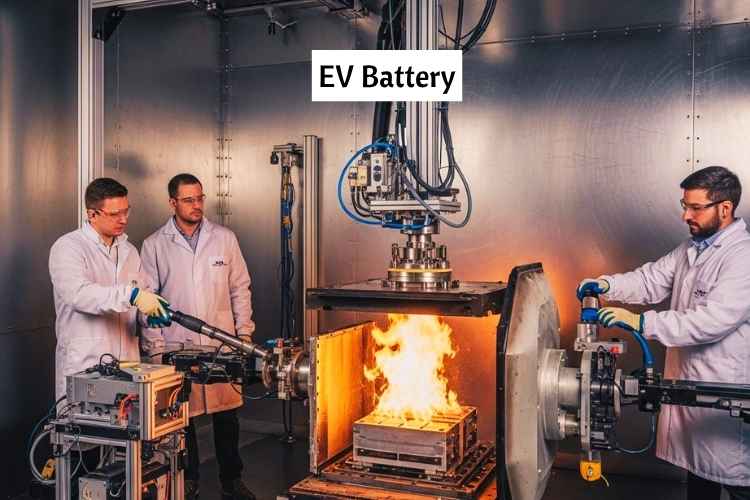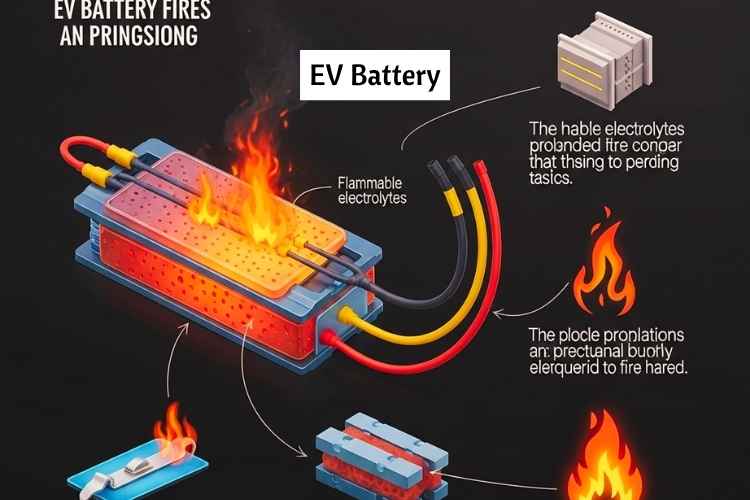EV Battery: As the world shifts toward cleaner energy and electric vehicles (EVs) rapidly replace traditional cars, a new and often underestimated challenge is emerging—how to deal with EV battery fires. These fires are not only difficult to extinguish but also pose serious risks to first responders, vehicle occupants, and the environment. Despite the booming EV industry, this fire safety issue remains a largely untackled risk. And what are we doing—or not doing—about it?

Let’s break it down.
Table of Contents
Understanding EV Battery Fires
EVs are powered by lithium-ion batteries, which store a significant amount of energy in a compact space. When these batteries fail—due to overcharging, impact, or manufacturing defects—they can undergo a process called thermal runaway.
Thermal runaway is a chain reaction within the battery, where heat builds up uncontrollably, causing one cell to ignite and spread to adjacent cells. This can lead to explosions, intense fires, and the release of toxic gases—all within seconds.
Why EV Battery Fires Are So Hard to Extinguish

Here’s a comparison of EV vs. internal combustion engine (ICE) fires:
| Aspect | EV Battery Fire | Gasoline Vehicle Fire |
|---|---|---|
| Ignition Risk | From thermal runaway, internal faults | From fuel leaks, heat, electrical faults |
| Extinguishing Effort | Requires prolonged cooling (10,000–30,000 gallons of water) | Often extinguished with ~300 gallons of water |
| Re-ignition Risk | Very high (can reignite hours or days later) | Low once extinguished |
| Toxic Emissions | Releases HF (hydrogen fluoride), CO, and other toxic gases | Produces carbon monoxide and hydrocarbons |
| Detection | Hard to detect internal failure before ignition | Usually, visible smoke or smell alerts before a fire |
| From fuel leaks, heat, and electrical faults | Usually, visible smoke or smell alerts to a fire | Usually, visible smoke or smell alerts before fire |
Conclusion
Electric vehicles are here to stay—and that’s a good thing for the planet. But the issue of battery fires remains an unsolved problem that could undermine safety and public trust in EV technology if not urgently addressed.
These fires are not rare, and they’re not like regular fires. They burn hotter, last longer, and can come back after being extinguished. Until we develop the right tools, training, and standards, every EV fire is a high-stakes learning curve.
We’re at a critical moment in EV evolution. Solving the fire suppression challenge isn’t just about protecting cars—it’s about protecting lives, first responders, and the promise of a cleaner future.
Bhakti Rawat is a Founder & Writer of InsureMyCar360.com. This site Provides You with Information Related To the Best Auto Insurance Updates & comparisons. 🔗
